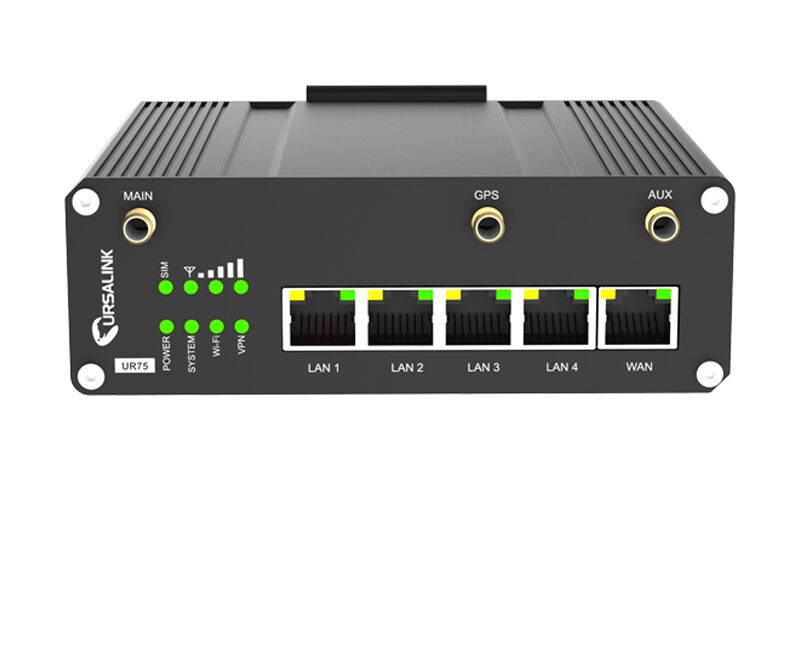
that annoying sms phish you just got Scammers have found a new avenue for their phishing campaigns by exploiting unsecured cellular routers used in industrial settings, researchers have revealed.
that annoying sms phish you just got
Overview of the Exploitation
In a recent report by the security firm Sekoia, researchers highlighted an alarming trend where unsecured cellular routers, specifically those manufactured by the China-based Milesight IoT Co., Ltd., have been repurposed for sending SMS-based phishing messages. This method of attack has been ongoing since 2023 and has raised significant concerns about the security of industrial IoT devices.
The Role of Cellular Routers
Cellular routers are rugged Internet of Things (IoT) devices designed to connect various remote industrial devices to central hubs via cellular networks. These routers are critical in managing infrastructure such as traffic lights, electric power meters, and other essential services. They are equipped with SIM cards that enable connectivity through 3G, 4G, and 5G networks, allowing for real-time data transmission and control.
One of the noteworthy features of these routers is their versatility in terms of control. They can be managed through text messages, Python scripts, and web interfaces, making them accessible for legitimate users. However, this accessibility also presents a double-edged sword, as it opens the door for malicious actors to exploit these features for nefarious purposes.
Discovery of the Vulnerability
Sekoia’s analysis of suspicious network traces detected in its honeypots led to the discovery of this alarming trend. The researchers found that a particular cellular router was being misused to send SMS messages containing phishing URLs. This discovery prompted further investigation, revealing a staggering number of vulnerable devices.
Extent of the Problem
Upon further examination, Sekoia identified over 18,000 such routers that were accessible on the Internet. Alarmingly, at least 572 of these routers allowed free access to their programming interfaces. This level of accessibility raises serious questions about the security practices employed by organizations that utilize these devices.
Many of the routers identified were running firmware versions that were more than three years out of date, leaving them susceptible to known vulnerabilities. Outdated firmware is a common issue in the IoT space, where devices often remain in service long after their software has been updated. This negligence creates an environment ripe for exploitation by cybercriminals.
Technical Details of the Attack
The method employed by the scammers is relatively unsophisticated but highly effective. By leveraging the unsecured programming interfaces of these routers, attackers can send bulk SMS messages containing phishing links. These links often lead to fraudulent websites designed to harvest personal information, such as usernames, passwords, and financial details.
Phishing attacks have evolved over the years, becoming more sophisticated and harder to detect. However, the use of unsecured industrial devices represents a new frontier for cybercriminals. By targeting these routers, scammers can bypass traditional security measures that might be in place for more conventional phishing methods.
Implications for Industrial Security
The exploitation of unsecured cellular routers has significant implications for industrial security. Organizations that rely on these devices for critical infrastructure must reassess their security protocols to mitigate the risks associated with such vulnerabilities. The potential for unauthorized access to sensitive systems poses a serious threat not only to individual organizations but also to public safety and national security.
Moreover, the use of industrial IoT devices in critical infrastructure sectors, such as transportation and utilities, raises the stakes even higher. A successful phishing attack could lead to unauthorized control of essential services, resulting in disruptions that could affect large populations.
Stakeholder Reactions
The revelation of this vulnerability has sparked concern among various stakeholders, including cybersecurity experts, industrial operators, and regulatory bodies. Many experts have called for immediate action to address the security flaws present in these devices.
Cybersecurity Experts
Cybersecurity professionals have emphasized the need for organizations to conduct thorough security assessments of their IoT devices. This includes updating firmware, implementing strong access controls, and regularly monitoring network traffic for suspicious activity. Experts also recommend that organizations adopt a proactive approach to cybersecurity, rather than a reactive one, to stay ahead of potential threats.
Industrial Operators
For industrial operators, the implications of these findings are profound. Many organizations may not fully understand the vulnerabilities associated with their IoT devices. As a result, there is a pressing need for education and awareness regarding the risks posed by unsecured routers. Operators must prioritize cybersecurity training for their staff and ensure that security measures are integrated into their operational protocols.
Regulatory Bodies
Regulatory bodies are also taking notice of the situation. The potential risks associated with unsecured IoT devices have prompted discussions about the need for stricter regulations governing the security of industrial systems. Policymakers may consider implementing standards that require organizations to adhere to specific security practices, ensuring that devices are regularly updated and monitored for vulnerabilities.
Best Practices for Securing IoT Devices
In light of these findings, organizations must take proactive steps to secure their IoT devices. Here are some best practices that can help mitigate the risks associated with unsecured cellular routers:
- Regular Firmware Updates: Ensure that all IoT devices are running the latest firmware versions to protect against known vulnerabilities.
- Access Controls: Implement strong access controls to limit who can access the programming interfaces of these devices. Use multi-factor authentication where possible.
- Network Segmentation: Segment IoT devices from critical networks to minimize the impact of a potential breach.
- Monitoring and Logging: Regularly monitor network traffic for suspicious activity and maintain logs for auditing purposes.
- Security Training: Provide cybersecurity training for staff to raise awareness about phishing attacks and other potential threats.
Conclusion
The exploitation of unsecured cellular routers for SMS phishing campaigns highlights a significant vulnerability in the industrial IoT landscape. As scammers continue to evolve their tactics, organizations must remain vigilant and proactive in their cybersecurity efforts. By implementing best practices and fostering a culture of security awareness, organizations can better protect themselves against the growing threat of cybercrime.
Source: Original report
Was this helpful?
Last Modified: October 2, 2025 at 4:39 am
5 views














